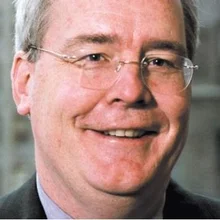
Isda seeks consensus on CDS clean-up
Credit definitions amendments expected in Q1 to stamp out manipulated triggers

An industry working group seeking to stamp out deliberately engineered payouts on credit default swaps is under pressure to reach a consensus on the appropriate fix, after a US regulator stepped up its call for action.
The International Swaps and Derivatives Association, which is leading a working group of CDS participants, was working towards an end-2018 timeline for amendments to its rulebook for the credit derivatives market, known as the definitions, which would eliminate so-called narrowly tailored credit events (NTCEs).
In a two-pronged fix, the group aims to address artificial creation of a failure-to-pay credit event, as well as the creation of artificially cheap deliverable obligations for the purpose of affecting the settlement price in an auction.
The industry association’s credit steering committee was convened in April to address the issue. Later that month, the US Commodity Futures Trading Commission released a statement warning that such events may constitute market manipulation and undermine the integrity of CDS markets. The committee is now expected to confirm changes in the first quarter of 2019, but crucial issues – such as wording for a test to determine NTCEs – are yet to be fully agreed.
“While there is general agreement among the working group members on the need to make changes, there remain some important areas of the proposals on which the group has not yet reached a consensus on the right way to achieve the desired outcome,” said Isda chief executive Scott O’Malia in an October letter to CFTC chairman Christopher Giancarlo. Giancarlo has been breathing down the CDS market’s neck since April’s controversial default and CDS payout for New Jersey homebuilder, Hovnanian.
Proposals under discussion would review any payment failure to determine whether it has been narrowly tailored. Loosely, that means any situation in which a credit event does not have a material impact on the cash market but does have a material – and largely predictable – impact on the CDS. This is typically achieved when the missed payment is small enough to trigger the CDS but does not breach the reference entity’s cross-default trigger –– as occurred with Hovnanian.
Discussions have also been held around a requirement for non-defaulted debt to be identified as part of any attempt to nullify a credit event. Such a proposal raises questions over what to do in the event non-defaulted debt is identified after a credit event has been determined, when auction preparations are already underway. The group has suggested time limitations for identification of non-defaulted debt to provide certainty around how an auction would run.
It is understood those proposals are still under discussion, though the issue may be dealt with in other ways.
The group has honed in on its preferred fixes, and is meeting weekly to consider potential implications and knock-on effects before agreeing a set of amendments. The market would then be asked to apply changes via a voluntary protocol that would amend contracts en masse, maintaining fungibility with newly issued instruments.
There remain some important areas of the proposals on which the group has not yet reached a consensus on the right way to achieve the desired outcome
Scott O’Malia, Isda
“It is important to keep in mind that the adoption of changes to the credit definitions is voluntary. Their use therefore depends on broad support of market participants, who will generally agree to changes only if they believe that such changes will be common practice,” said O’Malia in the letter.
Fixing the problem without opening up new loopholes or hampering legitimate activity is a minefield, however, according to those who have been through multiple rewrites and amendments to the definitions, which govern when and how CDSs will pay out.
“There are several ways these credit events have been described: narrowly tailored, unconventional, manufactured and manipulated, but I don’t think anyone likes these credit events. I think people are very much of the view that if we can figure out and properly define them, we can properly ban them, but then that becomes the issue. How do you properly define them?” says Robert Pickel, a former Isda chief executive, who acted as an expert witness in a case brought by Solus Alternative Asset Management as part of an attempt to halt the Hovnanian financing.
Define and conquer
Isda’s market-wide consultation came after Hovnanian and its lender, Blackstone’s GSO unit, caused a stir by conducting a high-profile NTCE. In late 2017, GSO reached a financing agreement that would see the homebuilder default on a small amount of debt, triggering payouts on CDSs.
Accusations of a manufactured credit event were rife, and could have been relegated to the annals of CDS controversy history, along with other trigger-to-finance deals including iHeart Communications in 2017 and Codere in 2013. But GSO went a step further. Proposals for a second restructuring, including the issue of deeply discounted debt, were seen as an attempt to maximise payout on CDSs in an auction. Even for the somewhat murky world of CDSs, Hovnanian proved to be a controversy too far, threatening to undermine the product’s credibility.
“I expect this to be addressed because it is an issue of concern, especially to end users and regulators,” says Simon Firth, a derivatives partner at Linklaters.
However, CDS participants and legal experts are concerned that any test for an NTCE could introduce an element of subjectivity for the credit determinations committee, the group of 15 sell side and buy side firms that rule on whether individual situations constitute a credit event under the definitions.
“The credit derivatives definitions aspire to being as clear as possible and provisions that require an assessment to be made about the motivation behind particular events would be very difficult to operate in practice. That’s part of the problem in coming up with something that excludes narrowly tailored credit events as it’s not easy to define what they are in a way that will be workable in all cases,” says Firth.

An element of subjectivity already exists in the restructuring credit event definitions, which require a deterioration in creditworthiness in order to trigger. Adding the same requirement to failure-to-pay credit events offers a possible fix, but also introduces greater uncertainty, which could hamper the product’s credentials as a trading instrument, potentially undermining liquidity.
“It hasn’t caused problems in practice but that is because, in the context of a restructuring, there is usually plenty of information available about why the restructuring was required and so it is possible to infer that it resulted from a deterioration in the reference entity’s financial condition,” says Firth.
Restructuring credit event definitions have been viewed as a possible blueprint for how to address failure-to-pay events. Increased complexity around restructuring situations has given rise to an array of supplements and updates for when CDSs pay out as a result of such activity.
For example, a 2001 supplement to CDS definitions introduced a modified restructuring clause that slapped a 60-month maturity cap on debt that could be delivered into an auction. The supplement, which has since been superseded by an extensive rewrite in the 2014 definitions, responded to a controversial restructuring credit event on US insurer Conseco in 2000. Lenders to the insurer agreed to extend the maturity of existing debt, enjoying lucrative CDS payouts along the way by delivering deeply discounted long-dated debt into the auction.
Maturity caps on debt delivered into the auction have been considered for the upcoming CDS definition amendments, but Isda is understood not to be pursuing that avenue.
While there are a host of potential fixes, Pickel says his former company will need to find a route that will be acceptable to all market participants if the changes are to be successful.
“There’s a real risk that CDS ceases to be a standardised product because everyone wants to trade their own version of it. That’s why I believe that what GSO did was an existential threat to this market,” he says.
“Changes to the definitions can’t be done overnight, because participants are trying to come up with solutions that work for the market and in some cases work for themselves. In order to work, you need a consensus that has sufficient buy-in so that when you go out with a protocol you know you’re going to get virtually everybody to sign onto those changes. It’s a challenge to get there.”
Update January 10, 2019: This story was updated to clarify that the Isda committee was convened prior to the CFTC statement.
Only users who have a paid subscription or are part of a corporate subscription are able to print or copy content.
To access these options, along with all other subscription benefits, please contact info@risk.net or view our subscription options here: http://subscriptions.risk.net/subscribe
You are currently unable to print this content. Please contact info@risk.net to find out more.
You are currently unable to copy this content. Please contact info@risk.net to find out more.
Copyright Infopro Digital Limited. All rights reserved.
As outlined in our terms and conditions, https://www.infopro-digital.com/terms-and-conditions/subscriptions/ (point 2.4), printing is limited to a single copy.
If you would like to purchase additional rights please email info@risk.net
Copyright Infopro Digital Limited. All rights reserved.
You may share this content using our article tools. As outlined in our terms and conditions, https://www.infopro-digital.com/terms-and-conditions/subscriptions/ (clause 2.4), an Authorised User may only make one copy of the materials for their own personal use. You must also comply with the restrictions in clause 2.5.
If you would like to purchase additional rights please email info@risk.net
More on Markets
Review of 2025: It’s the end of the world, and it feels fine
Markets proved resilient as Trump redefined US policies – but questions are piling up about 2026 and beyond
Does crypto really need T+0 for everything?
Instant settlement brings its own risks but doesn’t need to be the default, writes BridgePort’s Soriano
Asset managers prep autocall ETFs with assets tipped to hit $30bn
Actively managed strategies wait in the wings after systematic approach nets Calamos $500m
US insurers turn to short-dated FX forwards as notionals rise
Counterparty Radar: Trades under three months make up nearly 60% of total positions, up from just a third in 2022
Citi launches core inflation QIS
Custom indexes eliminate energy and food prices to ease trading of stickier inflation trends
Analysts dismiss BDC credit quality concerns
Growing private credit worries helped drive losses, but fundamentals are said not to support that view
October’s crash shows crypto has come of age
Ability to absorb $19bn liquidation event marks a turning point in market’s maturity, says LMAX Group's Jenna Wright
From inertia to acceleration: scaling tri-party VM and collateral reuse
Catalysing network effects and expanding non-cash VM at scale








